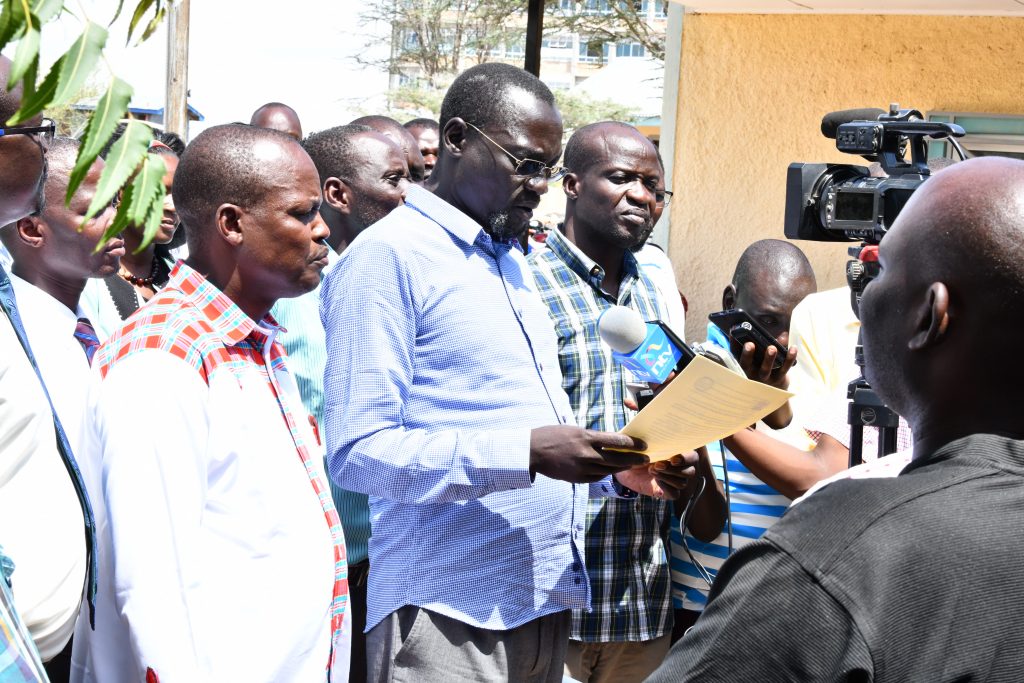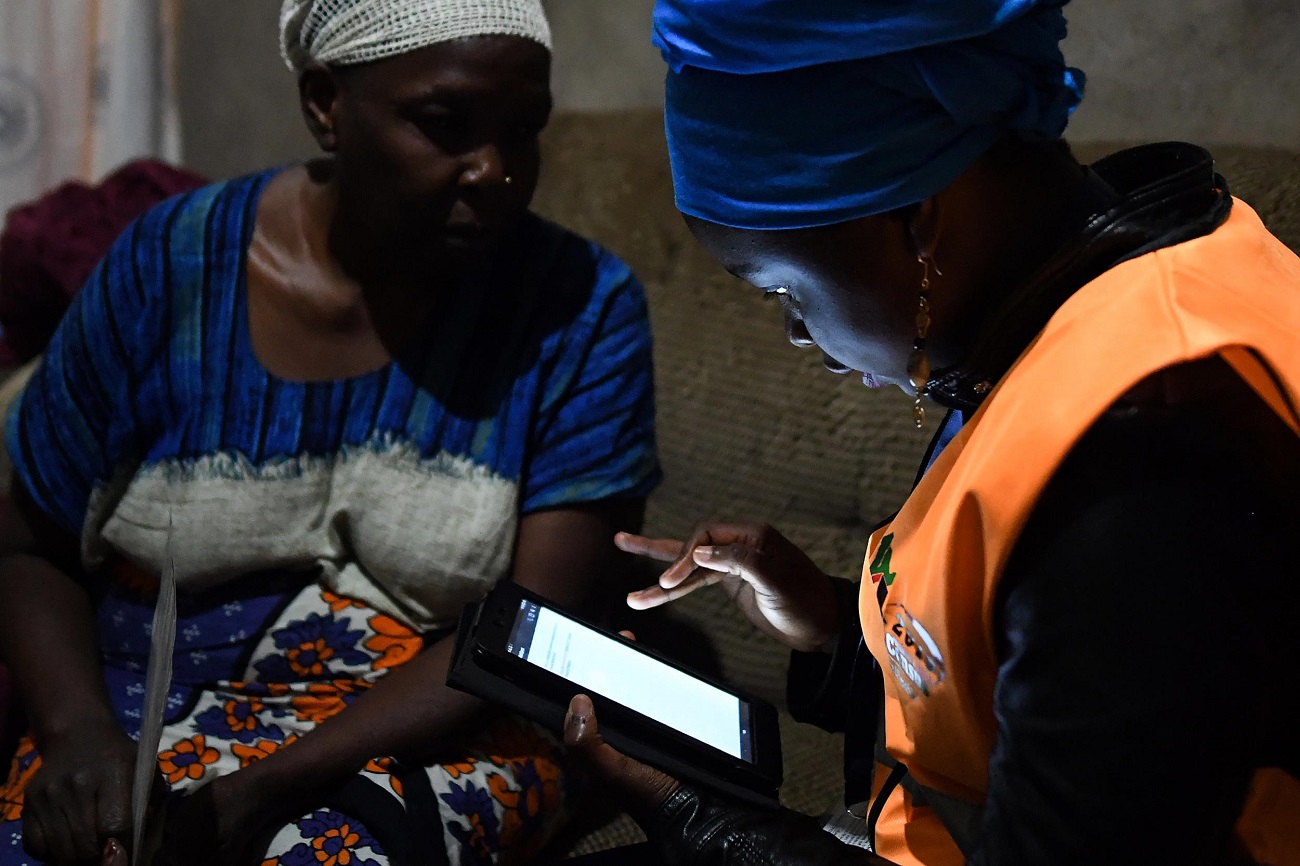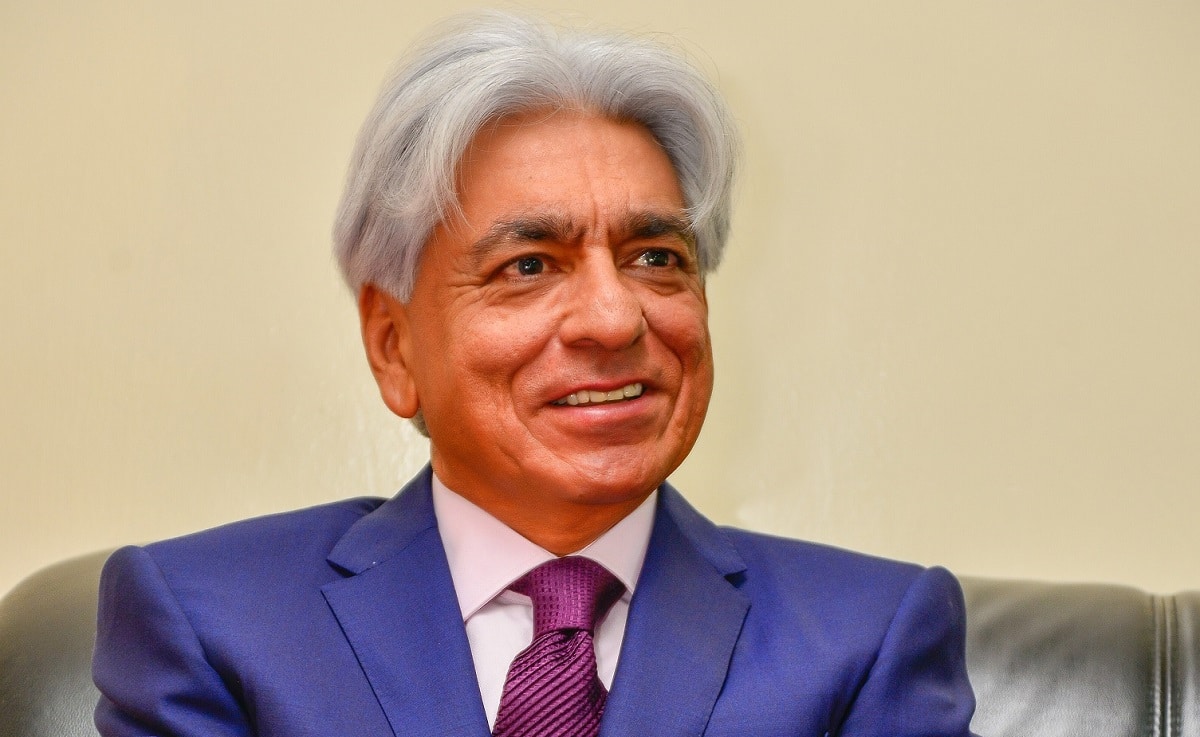He sat behind the table in the hallowed precincts of the country’s law-making building holding his head in his hands and almost weeping quietly.
Those around him looked at him in pity, and his colleagues who did not know the reason for this wondered why a grown man was weeping openly.
“This data, which was released this week, is false and not fit for purpose,” he blurted out to the surprise of all those who had gathered for the presser.
He was a politician who represents a constituency with a large Muslim population in the Northern region of the country. He argued that in his region, men normally have more than one wife, and thus it would be expected that the numbers of women would be higher.
Kenya’s population census figures have caused controversy among some groups who feel the results are not fair or accurate. It found that the total population of the country is now 47.6 million, nine million more than in 2009. But some regions have experienced a decrease in population.
These outcomes have been hugely controversial because the size of the local population has important implications on the level of government funding regions receive.
Kenya is made up of many different ethnic groups, closely aligned to competing political parties. The government has yet to release all the data on the ethnic composition of the country, but the changes in population in certain regions from this latest census have already caused disquiet.
The outcome of such surveys can embolden or weaken claims made by groups for political representation or resources.
Why population size matters
In one area of the north-east region bordering Ethiopia and Somalia, the census indicates a decrease in the population, prompting local political leaders looking to retain funding for their regions to question the veracity of the survey. The figures also reveal a high gender imbalance in the area, with significantly more males than females, leading some to speculate it might be due to a higher incidence of female mortality or an influx of single men who have moved there to work.
I have been invited by a group of professional population statisticians who monitor population trends to demystify what they call “political noise” and give a sober discourse on how managers in organizations can use the data generated for efficient management and productivity.
The census is an important process that the government attaches great value to due to the need for evidence in planning. Evidence-based decision making is a universally recognized paradigm of efficient management of countries.

Furthermore, the United Nations recognises the importance of population and housing censuses and, therefore, has issued international principles and recommendations to assist statistical offices and census officials throughout the world in planning and carrying out improved and cost-effective censuses.
Kenya has had seven censuses before, two of which were pre-independence. The Government has managed to undertake population and housing censuses after every ten years since 1969. The Government through the National Treasury and Planning gazetted the Legal Notice no. 205 on undertaking of the census technically known as The Statistics (Census of Population) Order, 2018 and conferred the mandate to the Kenya National Bureau of Statistics.
Read Also >> Why Young People Struggle to Get Jobs and Oldies Just Attract Them
Further, the census provides statistical information on the size, distribution and characteristics of Kenya’s population that is used to describe and assess the socio-economic and demographic status. It provides the much-needed comprehensive data at county and lower levels to inform development planning and programming to facilitate the delivery of quality services to the citizens.
At the national level, this information is useful in monitoring the progress made towards achieving Vision 2030 and more so the Big 4 agenda. On the global arena, Kenya will be monitoring its progress in achieving internationally agreed programmes such as Sustainable Development Goals (SDGs).
First devolution census
I paused to sip water from the conveniently placed bottle at the podium. As you may be aware, I continued, this is the first census that was undertaken in the new dispensation of a devolved system of governance. It is expected to provide comprehensive statistics for a wide range of indicators ranging from fertility, mortality, education and labour among others.
In addition, the census collected comprehensive information on persons living with disability. This is to ensure inclusivity and enable appropriate planning for the needs of all persons. All persons resident in Kenya were enumerated in order to provide information for planning for the country.
Preparatory activities for the census commenced three years in advance and the teams in the field had undertaken cartographic mapping, which were used to create Enumeration Areas ahead of actual enumeration. The census process fully embraced modern technology as a best practice to improve on data quality.
The use of technology-enhanced the quality of the data as it had in-built checks, correction of inconsistent responses and cross‐validation with other records. It is also enabled faster release of census data.
Most of the audience was surprised to learn that KNBS, being the principal government agency for official statistics, is involved in other data collection activities that are geared towards the improvement of the welfare of Kenyan citizens.
As I finished my overview presentation, the Moderator invited responses, reactions and questions from the audience. The first to raise up her hand was a fourth-year student from the Institute of Population Planning and Development.
What is the role of Statistics in decision making and do they give any competitive advantage to 21st Century Organization?
I answered that in the increasingly competitive global arena of business in the Twenty-First century, a select few business organizations distinguish themselves by enhanced decision making backed by statistics. Statistics are useful when they are applied to improve decision making.
No longer is the production of statistics confined to quantitative analysis and market research divisions in firms. Managers in each of the functional areas of business use statistics daily to improve decision making. Excel and other statistical software live in our laptops, providing immediate access to statistical tools which can be used to improve decision making.
The second question came from gentleman who was draped in what looked like a West African Agbada and it was apt.
What is a census?
I explained that a census is the procedure of systematically acquiring and recording information about the members of a given population. This term is used mostly in connection with national population and housing censuses; other common censuses include traditional culture, business, supplies, and traffic censuses.
The United Nations defines the essential features of population and housing censuses as “individual enumeration, universality within a defined territory, simultaneity and defined periodicity”, and recommends that population censuses be taken at least every ten years. United Nations recommendations also cover census topics to be collected, official definitions, classifications and other useful information to co-ordinate international practices.
Origins of Census
The word census is of Latin origin. During the Roman Republic, the census was a list that kept track of all adult males fit for military service. The modern census is essential to international comparisons of any kind of statistics, and censuses collect data on many attributes of a population, not just how many people there are.
Censuses typically began as the only method of collecting national demographic data, and are now part of a larger system of different surveys. Although population estimates remain an important function of a census, including exactly the geographic distribution of the population, statistics can be produced about combinations of attributes, e.g. education by age and sex in different regions.
Current administrative data systems allow for other approaches to enumeration with the same level of detail but raise concerns about privacy and the possibility of biasing estimates.
A census can be contrasted with sampling in which information is obtained only from a subset of a population; typically main population estimates are updated by such intercensal estimates.
Using census in research
Modern census data are commonly used for research, business marketing, and planning, and as a baseline for designing sample surveys by providing a sampling frame such as an address register. Census counts are necessary to adjust samples to be representative of a population by weighting them as is common in opinion polling.
See Also >> How to Use Appropriate Dress Code to Motivate Employees
Similarly, stratification requires knowledge of the relative sizes of different population strata which can be derived from census enumerations. In some countries, the census provides the official counts used to apportion the number of elected representatives to regions. In many cases, a carefully chosen random sample can provide more accurate information than attempts to get a population census.
I was pleasantly surprised when the participants started clapping at the explanation that I had given which I thought should have been common knowledge.
Statistics for effective management
The moderator requested me to expound further on how managers can use statics for effective management of their organizations.
Operating a business of any size is a complex undertaking. In addition to day-to-day responsibilities, a company must engage in long-term planning, develop new products or services, streamline production or delivery and locate new customers while serving existing clients.
Running a business on instinct no longer suffices. Statistics provide managers with more confidence in dealing with uncertainty in spite of the flood of available data, enabling managers to more quickly make smarter decisions and provide more stable leadership to staff relying on them.
Focusing on Big Picture
Statistical analysis of a representative group of consumers can provide a reasonably accurate, cost-effective snapshot of the market with faster and cheaper statistics than attempting a census of very single customer a company may ever deal with. The statistics can also afford leadership an unbiased outlook of the market, to avoid building strategy on uncorroborated presuppositions.
Evidence to Substantiate Positions
Statistics back up assertions. Leaders can find themselves backed into a corner when persuading people to move in a direction or take a risk based on unsubstantiated opinions. Statistics can provide objective goals with stand-alone figures as well as hard evidence to substantiate positions or provide a level of certainty to directions to take the company.
For example, you may find it easier to convince board members of the value of international expansion by providing data on the available market for products in a given country. Break down demographics, average income and competitor products in the country.
Connecting Variables
Statistics can point out relationships. A careful review of data can reveal links between two variables, such as specific sales offers and changes in revenue or dissatisfied customers and products purchased.
Delving into the data further can provide more specific theories about the connections to test, which can lead to more control over customer satisfaction, repeat purchases and subsequent sales volume. For example, a free gift with purchase offer may drive more sales than a discount period.
Ensuring Product Quality
Anyone who has looked into continuous improvement or quality assurance programs, such as Six Sigma or Lean Manufacturing, understands the necessity for statistics. Statistics provide the means to measure and control production processes to minimize variations, which lead to error or waste, and ensure consistency throughout the process. This saves money by reducing the materials used to make or remake products, as well as materials lost to overage and scrap, plus the cost of honoring warranties due to shipping defective products.
I was about to sit down when the Moderator looked at me and stated, “Even though we are not politicians Daktari, can you in snap-shot give us a global perspective of the just released census and its political implications”
Since I was not anticipating such a question coming up, I was almost caught flat-footed. I quickly summarised the sentiments of some key players who had reacted to the release of the census report as reflected below:
Meru Governor Kiraitu Murungi has threatened to take legal action against the Kenya National Bureau of Statistics (KNBS) over what he terms as misrepresentation of the number of people in his county. The Governor does not agree with the 1.5 million figure recorded as the population for Meru County. He claims that Ngare Mare residents have been listed under Isiolo County.
Tharaka Nithi Governor Muthomi Njuki, Tharaka MP Gitonga Murugara and Chuka Igamba Ng’ombe MP Patrick Munene have declared the county’s 393,177 population figure as low and have vowed to petition KNBS to review the numbers.

Kandara Member of Parliament Alice Wahome has also disputed the 1,056,640 figure recorded as the population for Murang’a County. “I’m shocked to see those results because that is not we expected. I think there is something fishy that has been done. But we shall have a meeting as Mt. Kenya leaders to look into these figures keenly and take a position on this issue,” said the MP.
Kisii Senator Prof. Sam Ongeri has challenged the census outcome showing Kisii has a population of 1.26 million people and 605,576 in Nyamira.
Ongeri says the numbers could be slightly higher adding that the low numbers will greatly affect the revenue allocation to the two counties in Gusii region. A section of political leaders in Homa Bay County led by National Assembly Minority leader John Mbadi have, however, expressed satisfaction with the results, saying they are reasonable compared to the population census conducted in 2009.
According to Mbadi, the results on population growth in Homa Bay is basically reasonable and respect the population partner of the county. This year’s population census results indicated that Homa Bay County has 1.13 million people against 963,794 people in 2009.Mbadi, who is the MP for Suba South constituency, says there is nothing abnormal in this year’s census results on population growth in Homa Bay compared to 2009.
His position was echoed by Homa Bay County Deputy Governor Hamilton Orata who said the census exercise was conducted scientifically hence he has no reason to object the results on population growth in Homa bay County.
I concluded by pointing out that Seven Kavonokia sect members were arrested after claiming that census is satanic.
I thanked everybody and sat down
The Moderator closed the meeting with what he said was a take-home. “Kwa Ground mambo ni different,” leaving everyone puzzled. I intend to find out what the statement means.
Next Read >> Onboarding or Induction? How to Welcome New Employees in Style












Leave a comment